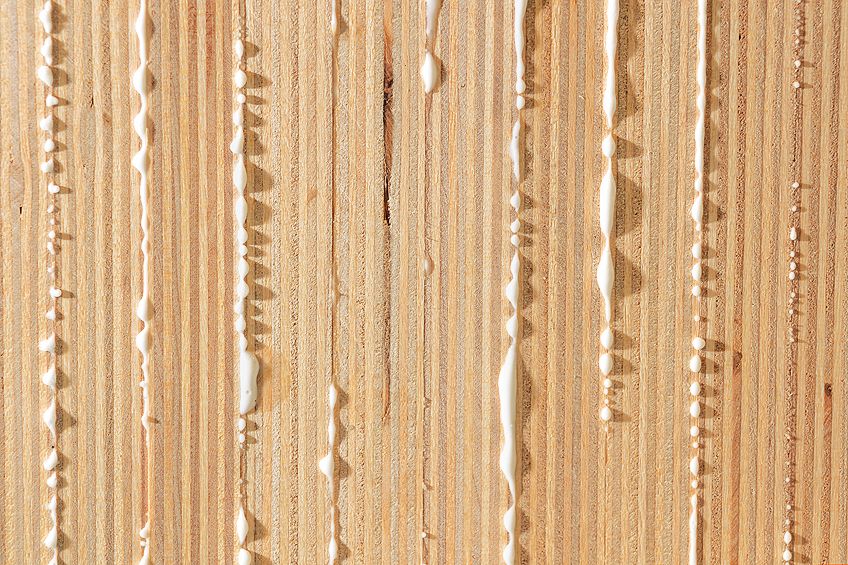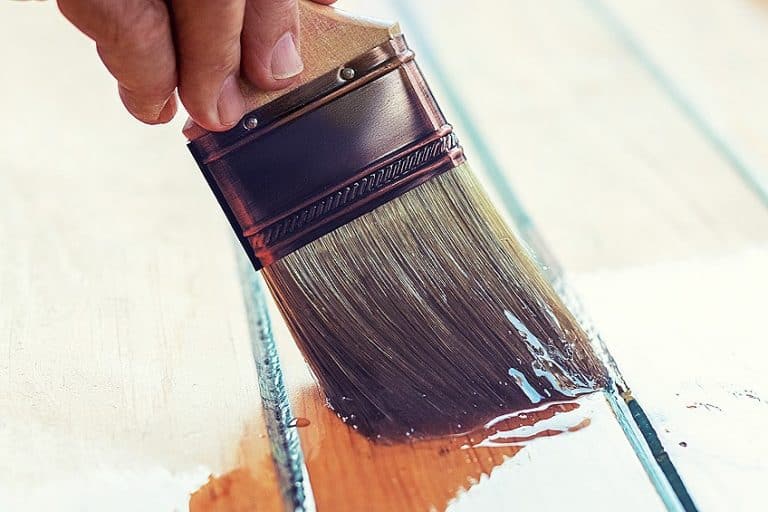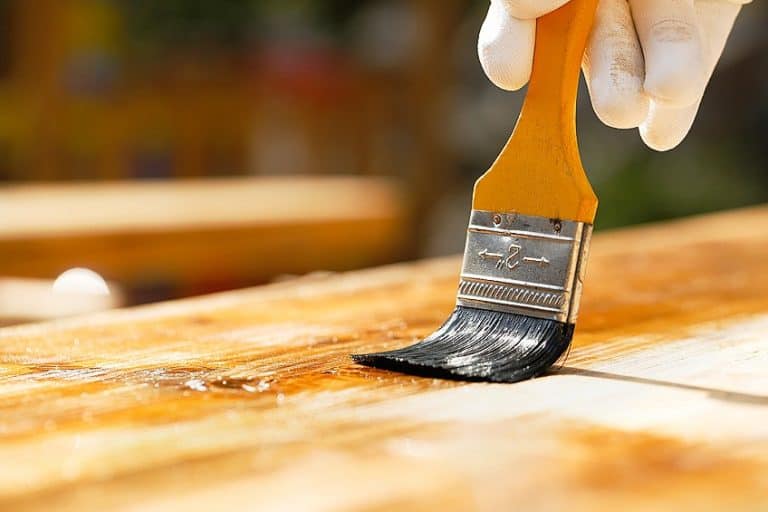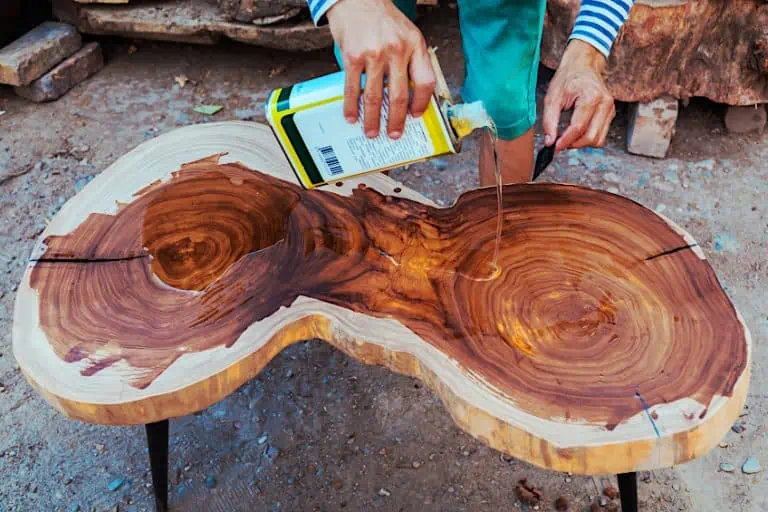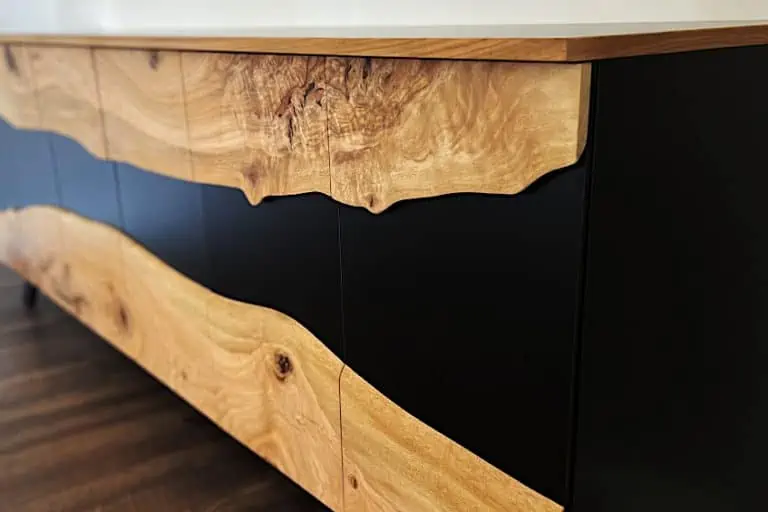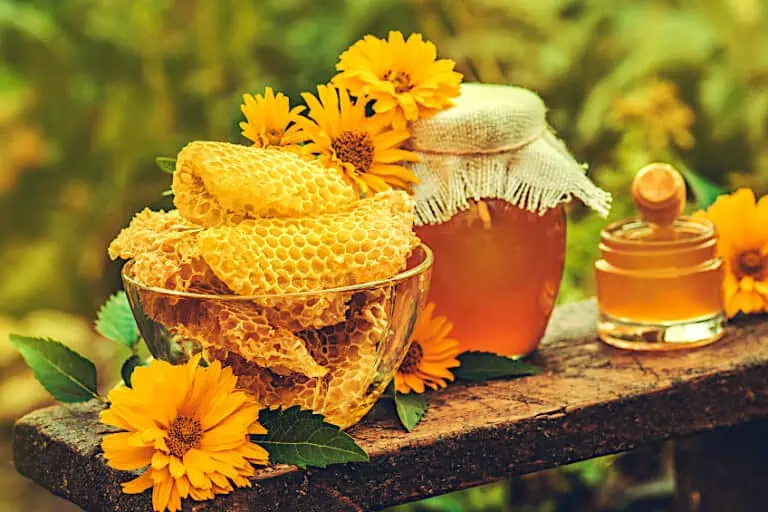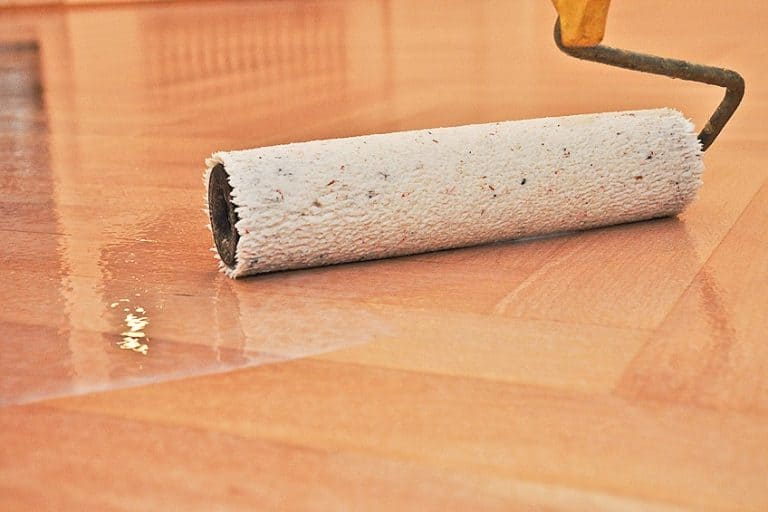How to Remove Wood Glue – Instructions for Removing Wood Glue
Wood glue can be one of the most useful products when working with wood. It provides a strong, long-lasting bond and can be used to simplify all kinds of projects. However, removing wood glue is not always such an easy task. If you want to find out how to remove wood glue without leaving any stains, marks, or damaging the wood, then be sure to check out our complete guide below.
Table of Contents
- 1 How to Remove Dried Wood Glue
- 2 Methods for Removing Wood Glue
- 3 Substances for Removing Wood Glue
- 4 Glue Removers that Work
- 5 How to Remove Wood Glue From Unfinished Wood
- 6 How to Remove Wood Glue From Painted Wood
- 7 How to Remove Wood Glue From Other Types of Wood
- 8 Working With and Removing Wet Glue
- 9 Frequently Asked Questions
How to Remove Dried Wood Glue
When working with wood glue, there is always the possibility of creating a mess on unwanted areas. Different types of glue have different properties and, depending on how you handle the glue, you can end up with very different types of wood glue marks to remove.
In some cases, the glue will drip and form textured droplets. Hardened drops of glue can be quite easy to remove through mechanical processes. Simply chip away the glue droplets with a scraper or use a chisel to remove any unwanted chunks of glue. This can often remove the entire glue spill with ease. The only issue is that you are likely to damage the underlying surface or remove paint through this process.
Cases where the glue smears over the surface are more tricky to deal with. Instead of drying and forming raised lumps, the glue permeates into cracks and spreads out flat across the surface. In order to remove this, a number of techniques can be used. These include wiping with a warm soapy cloth or using heat, such as from a hairdryer.
The way that you wipe off wood glue should depend on the surface it has dried over. Certain wooden surfaces can be damaged more easily, in which case less abrasive and gentler methods should be used.
Methods for Removing Wood Glue
Dried wood glue forms a bond that is not actually meant to be removed, so taking it off without damaging the wood underneath can be a challenge. However, with the right techniques, it is always possible.
The way that you remove wood glue should depend on the type of surface or wood. While there are many methods that can be used, the following two are usually the best starting points for any type of wood or surface.
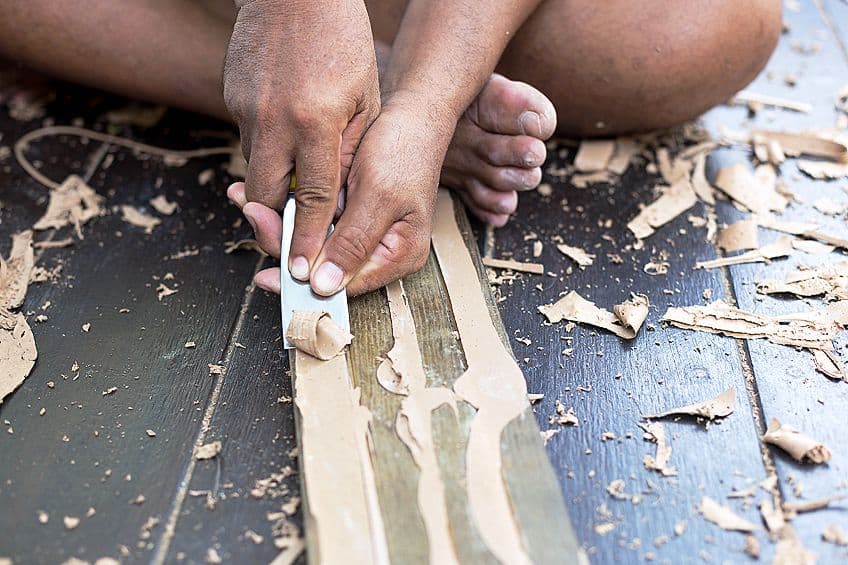
Remove Wood Glue with a Spatula
No matter what surface or type of wood, this is always a good technique to use. A spatula works particularly well when there are large areas of raised dried wood glue. To do this, start by wetting a cloth in hot water and placing it over the dried wood glue. Let this soak for a few minutes to dampen the glue.
Once the glue has softened, scrape off any loose parts with a spatula. The glue should be lifted and scraped off fairly easily. Just work slowly and carefully, so as to not damage the wood surface underneath the glue.
Remove Wood Glue with a Hairdryer
Using a hairdryer is a great way for softening and loosening powerful vinyl glue. Simply turn on the hairdryer and aim hot air towards the dried glue for a few moments. This should help to loosen up the glue and remove the bond. When the glue has heated up, you should be able to carefully peel or scrape it off the surface. Heat is usually the most effective method for removing dried glue.
Substances for Removing Wood Glue
If you need to remove wood glue that has dried in a difficult position, certain substances may be required. The product chosen should depend on the surface you are wiping and how stubborn the wood glue is. Here are some good substances to use for removing wood glue effectively:
- Warm soapy water
- Acetone
- Vinegar
- Ammonia
- Brake cleaner
- Lemon and salt
- Methylated spirits
- Special glue remover
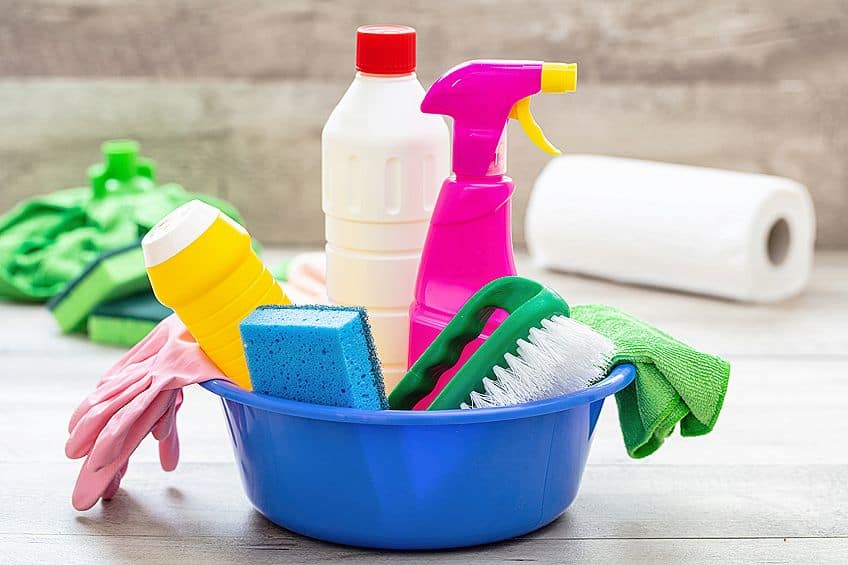
Glue Removers that Work
Specialized products for removing glue are available for anyone wanting to clear up difficult wood glue stains. We recommend the following products for removing wood glue.
Best Overall: GOO GONE Adhesive Remover
This surface-safe formula has been specially designed to provide an effective way of removing wood glue without damaging the surface. This adhesive remover offers a wide range of applications and can remove all kinds of sticky and gooey substances.
The Goo Gone formula can be used on many different types of surfaces, as well as on carpets. This adhesive remover is also available in a wide range of different formats and specialized solutions for different uses.
Pros
- An easy-to-use adhesive remover
- Suitable for a wide range of surfaces
- Can be used in many different ways
- Will not damage the surface underneath the glue
- Effectively removes tough glue spills
Cons
- Does not always remove sticky label marks very efficiently
Premium Pick: LOCTITE Glue Remover
Loctite is known for its quality superglues, but this brand also produces an excellent glue remover. This product is formulated especially for removing super glue stains, and works well over a wide variety of surfaces.
Simply wipe on the glue remover and let it stand for a while. When wiping it off, the surface below should be clean and free from any difficult super glue marks.
Pros
- Works effectively over a wide range of surfaces
- Can remove difficult super glue stains
- Does not damage the underlying surface
- Can be used for various types of adhesive removals
Cons
- Small size, making it more suitable for smaller areas
- Takes a long time to work
Best Value for Money: GOOF OFF Professional Strength Remover
This product is based on the idea that everyone makes mistakes in their DIY projects, which is why you should always keep a bottle of Goof Off’s Professional Strength Remover on hand. You will only need one application of this product in order to remove all kinds of tough stains and marks.
This product contains some toxic chemicals, however, thus attributing to its potent smell. You will need to wear the appropriate protective gear when working with this remover. You should wear protective goggles, a respirator, and chemical-resistant gloves.
Pros
- Extremely effective remover of all kinds of stains, spots, and marks
- Works of many types of surfaces
- Will not damage the underlying surface
Cons
- Contains hazardous chemicals
- Produces a strong smell
How to Remove Wood Glue From Unfinished Wood
Removing wood glue from unfinished wood requires a lot of care and precision so as not to leave any marks. Here are some of the best methods and materials that can be used to remove wood glue from bare or untreated wood. Often, these approaches will be taken after a hairdryer or spatula technique has already been applied.
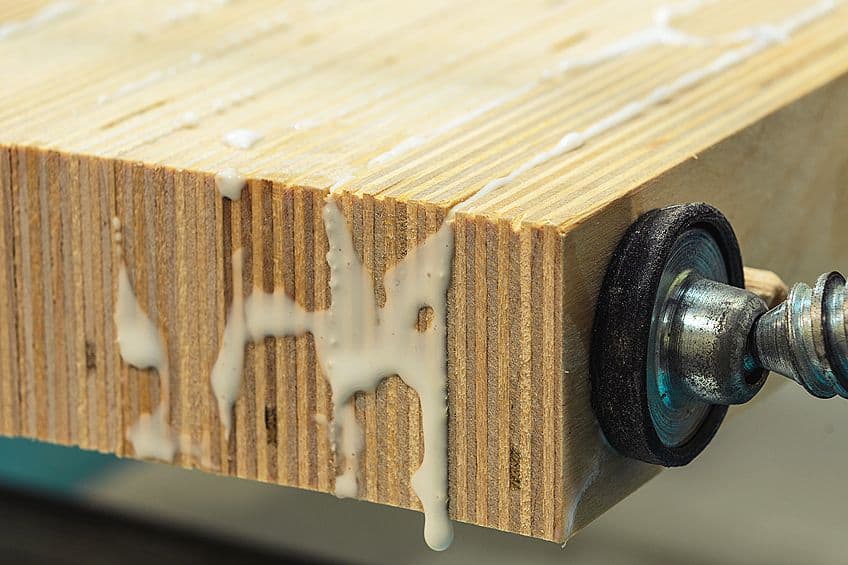
Nail Polish Remover
Nail polish remover can be a great tool for removing unwanted wood glue. As long as the nail polish remover does not have any acetone in it (which could leave marks on the wood), it should be an effective method. Using nail polish remover on dried wood glue is best done with emery paper, steel sponges, or coarse steel wool.
Scratching
Mechanically removing the glue is often the best approach to take. This is simply done by scratching it off with your nails or a file. When removing wood glue from unfinished wood this way, marks or scratches may occur on the wood below. Usually, you should be able to simply sand these away.
Baking Soda
First, use a hairdryer to try to soften the glue, then remove any loose pieces with a spatula. Once this is off, you can make a paste using baking soda and some hot water. Spread this paste over any marks, and leave it to sit for at least 15 minutes. Follow this by washing the paste off with hot soapy water.
Acetone
Acetone can be used to remove dried wood glue on unfinished wood, but it needs to be done with great care. Acetone is only really suitable to use if you are dealing with a small stain. Simply dab some acetone on a cloth and gently rub this over the mark until it is removed.
How to Remove Wood Glue From Painted Wood
Methods of how to remove dried wood glue from painted surfaces could require a bit of extra work. Special care needs to be taken so as not to damage or remove any of the underlying paint. Start by removing any large pieces of glue from the surface either with a plastic spatula or by using a hairdryer to heat up and peel the glue. Following this, a few techniques can be followed to ensure a clean surface that has been fully cleared of any dried glue.
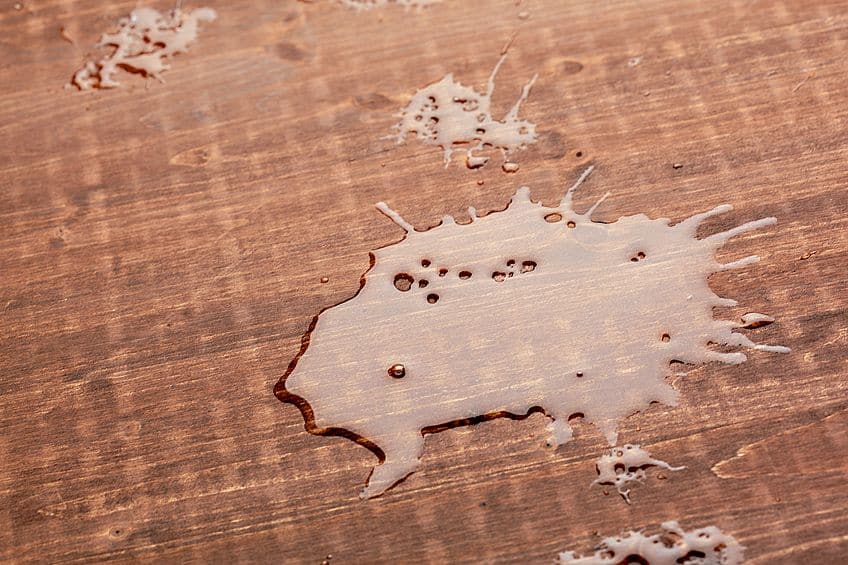
Vinegar
Regular white vinegar can be used to remove glue stains for a safe and non-toxic approach. Simply soak a bit of the vinegar on a cloth and use it to dab at the stained area. The vinegar will help to loosen up the dried wood glue. You can then wipe the area clean using a cloth soaked in hot water. If there is still wood glue remaining, you can wipe the area again with steel wool.
Cooking Oil
Another useful household item for removing wood glue is cooking oil. Regular cooking oil is chosen because it will not damage any underlying paint and is harmless to the surface. Simply rub a cloth with cooking oil over the stained area. This is best done quite vigorously. Cooking oil can be washed off after this with soap water. This should remove any stains left behind by the wood glue.
How to Remove Wood Glue From Other Types of Wood
There are a number of different kinds of wood in various formats, from wooden tables to hardwood or parquet floors. The type of wood and its overall purpose will determine the best approach to take when removing glue from these surfaces.
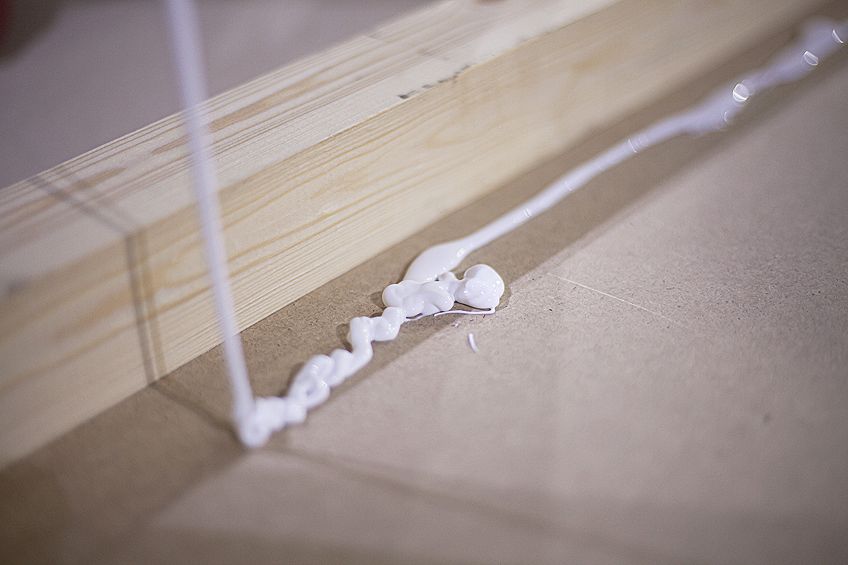
Removing Wood Glue From a Wooden Table
Often, the best cleaning products are simple household items. Lemon and salt are a great solution for cleaning up wood glue stains and are usually easily available. This is a safe and non-toxic way to take out any unwanted glue stains from a wooden table.
Simply squeeze the lemon juice onto the stained area and wait for about 15 minutes while it soaks. Sprinkle some salt over the lemon and wait for a couple of minutes. After this, the glue stain should be loosened up and easily scraped off with a spatula.
If you need to remove superglue from wooden furniture, then a simple soapy mixture can also do the job. Just mix some laundry soap into regular soapy warm water. This can be used with a cloth to wipe off the glue stains.
Removing Wood Glue From Hardwood
When working with glue, you may end up with some dripping over the wooden floor. Dried glue stains on a hardwood floor can seem daunting, but there is no need to worry. With the right techniques, these stains can be fully removed. Want to know how to remove dried glue from wooden floors? Follow these easy steps:
- Start by softening and loosening the glue with a hot hairdryer.
- Scrape off the soft parts of glue with a spatula.
- Apply a mixture of baking soda and water to the wood glue stain. Let this stand for a few minutes.
- Clean the area up with a soapy cloth. This should have removed the unwanted glue stain.
Removing Wood Glue From Parquet Flooring
Just like with hardwood flooring, parquet floors can also become victim to wood glue stains where you do not want them. This glue can be removed without damaging the floor by performing the correct steps.
If you are dealing with a solvent-based adhesive, the glue should be more flexible and easy to remove. Remove the bulk of the glue off with a spatula or scraper of some kind. Then apply the baking soda solution again and wipe it off with a cloth.
Vinyl glue dries clear and can be a bit more brittle to remove. Scrape off as much as you can with a spatula before wiping the area clean.
Removing Wood Glue From Waxed Wood
Removing wood glue from wood that has been waxed is a slightly different story. This can be done by using the following method:
- Use sheets of absorbent paper to cover up the stain.
- Run a hot iron over the paper to soften the stain. This must not be too hot, otherwise the paper will burn.
- The absorbent paper should be able to soak up the liquid glue stain.
Removing Wood Glue From Varnished Wood
Varnish provides a layer over wood that can be damaged quite easily. This means that a gentle means of removing wood glue stains are best. Start by simply dabbing at the glue stain with warm water and a cloth. If this does not work, using cooking oil is also a good option.
White spirits also work well, as they will not affect varnish. Use a cloth to rub some of this over the glue mark in order to remove it. Try to do this as gently as possible.
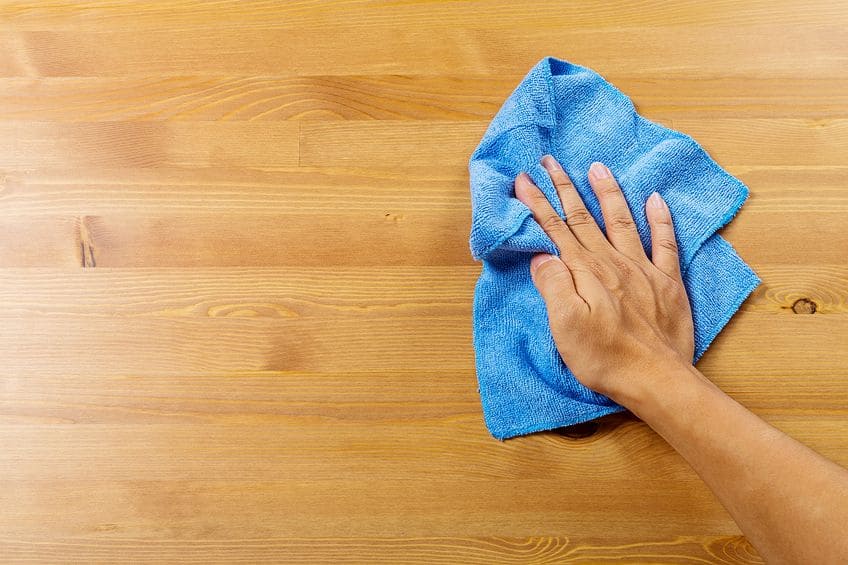
Removing Wood Glue From Wood Teak
Teak is a rather unique type of hardwood that is used often in furniture-making. Teak is a beautiful wood with many desirable qualities. However, it is still not invincible to wood glue stains. If you spill wood glue on teak, try to remove it as follows:
- Start by washing over the wood glue with an abrasive sponge and water.
- Take a cotton ball dipped in methylated spirits, and rub it over the stained area to remove any remaining marks.
- If the glue leaves behind an uneven surface, you can sand it down with fine sandpaper until the surface is smooth again.
Working With and Removing Wet Glue
If wet glue spills while you are working with it, this should be cleaned up straight away. Wet glue is generally pretty easy to clean without leaving any marks. Simply wipe it away with a damp soapy cloth – preferably warm. Acetone is a more intense option that can be used for tougher glue spills. If there is a large blob of glue that spills, it is actually best to let it harden slightly before removing it with a spatula.
When working with wet glue, it’s best to try to avoid any spills or stains completely. This can be done by using tape to mark off the area where you will be applying the glue. The tape will prevent any extra glue from seeping past the point where you want it.
Removing wood glue from fabric is incredibly difficult. When using wet glue, try to work with an apron of some kind to protect your clothes. You can try to wipe glue off of clothes by using warm water or even acetone, but it is very difficult to get off without any glue being left behind.
If you were wondering how to remove wood glue, then this guide should have covered everything you needed to know. Removing wood glue can be a challenging process, but with the right tools and techniques, you can do it with great results. Knowing the methods above should help to give you more confidence when working with wood glue!
Frequently Asked Questions
Can You Sand Wood Glue?
Wood glue can be sanded down so as to flatten any bumps left behind by the glue. If you are removing wood glue stains, the area is often sanded down afterward to achieve maximum smoothness.
Can Mineral Spirits Remove Wood Glue?
Yes. Mineral spirits can be dapped on wood glue stains with a cloth to remove the glue and any unwanted marks left behind.
Does Vinegar Dissolve Glue?
White vinegar can be an effective substance for removing glue stains. Wipe the vinegar over the remaining wood glue stains with a cloth.
How Can I Remove Dried Wood Glue From Wood?
There are a number of different methods to do this. You can try to chip away the dried wood or use hot air to melt the glue and peel it off. Wood glue removers, acetone, and soapy water can also be effective at removing dried wood glue.

I have been into woodworking since 2005 and woodturning since 2011. Because of my love for wood and woodworking, I started woodhappen.com to teach other enthusiasts about how to finish and seal wood, the best woodworking tools, the different types of wood, and everything else related to woodworking! Read more about me here.

